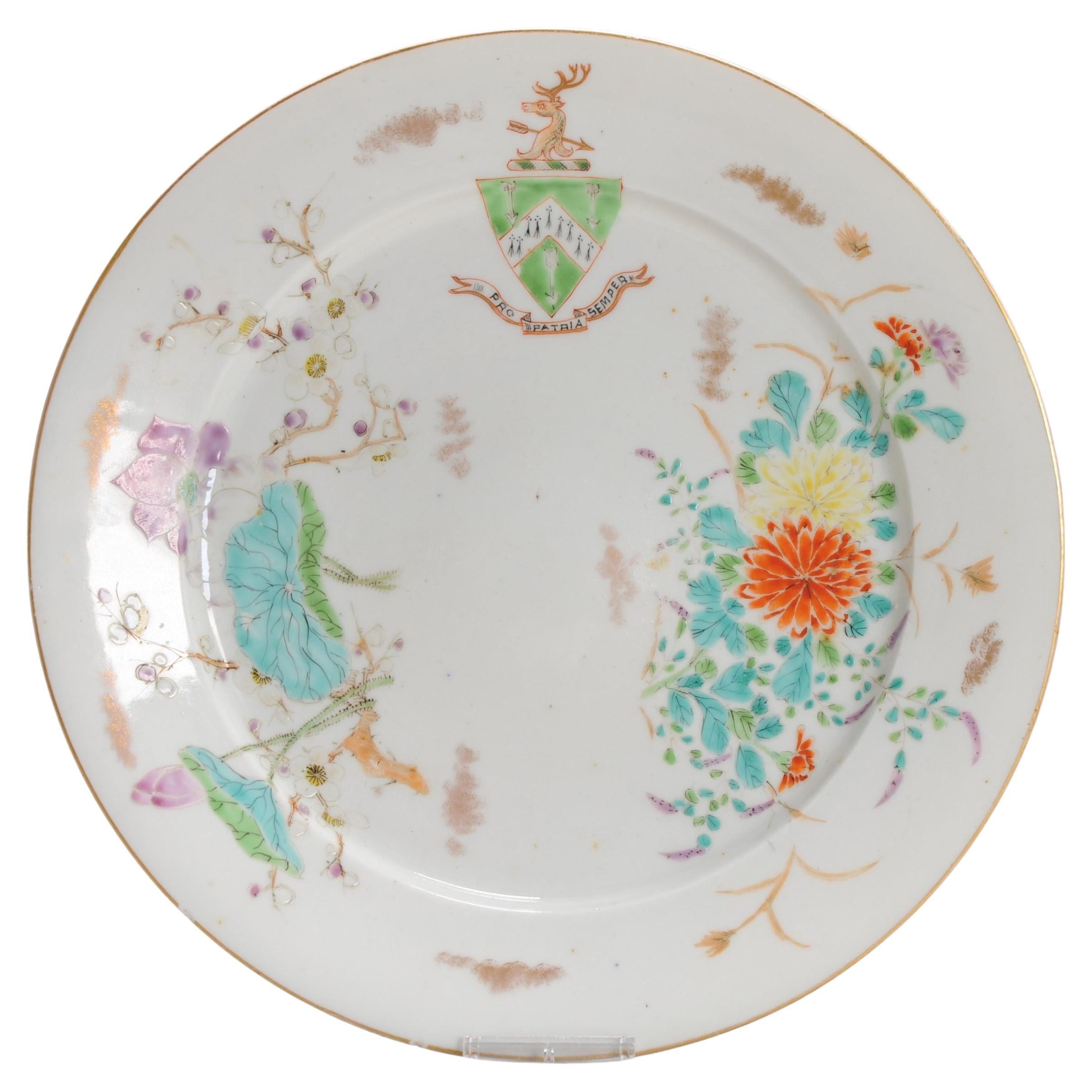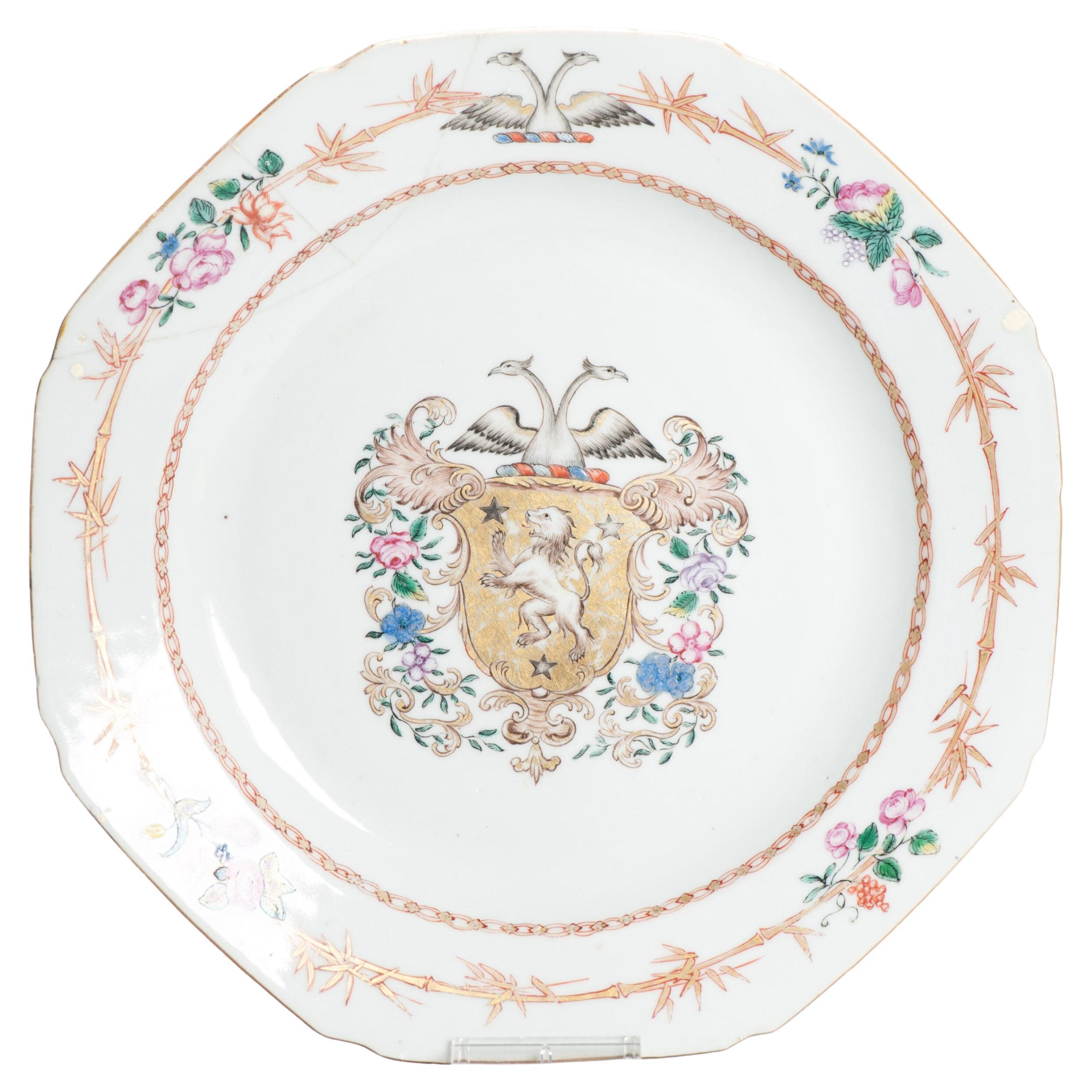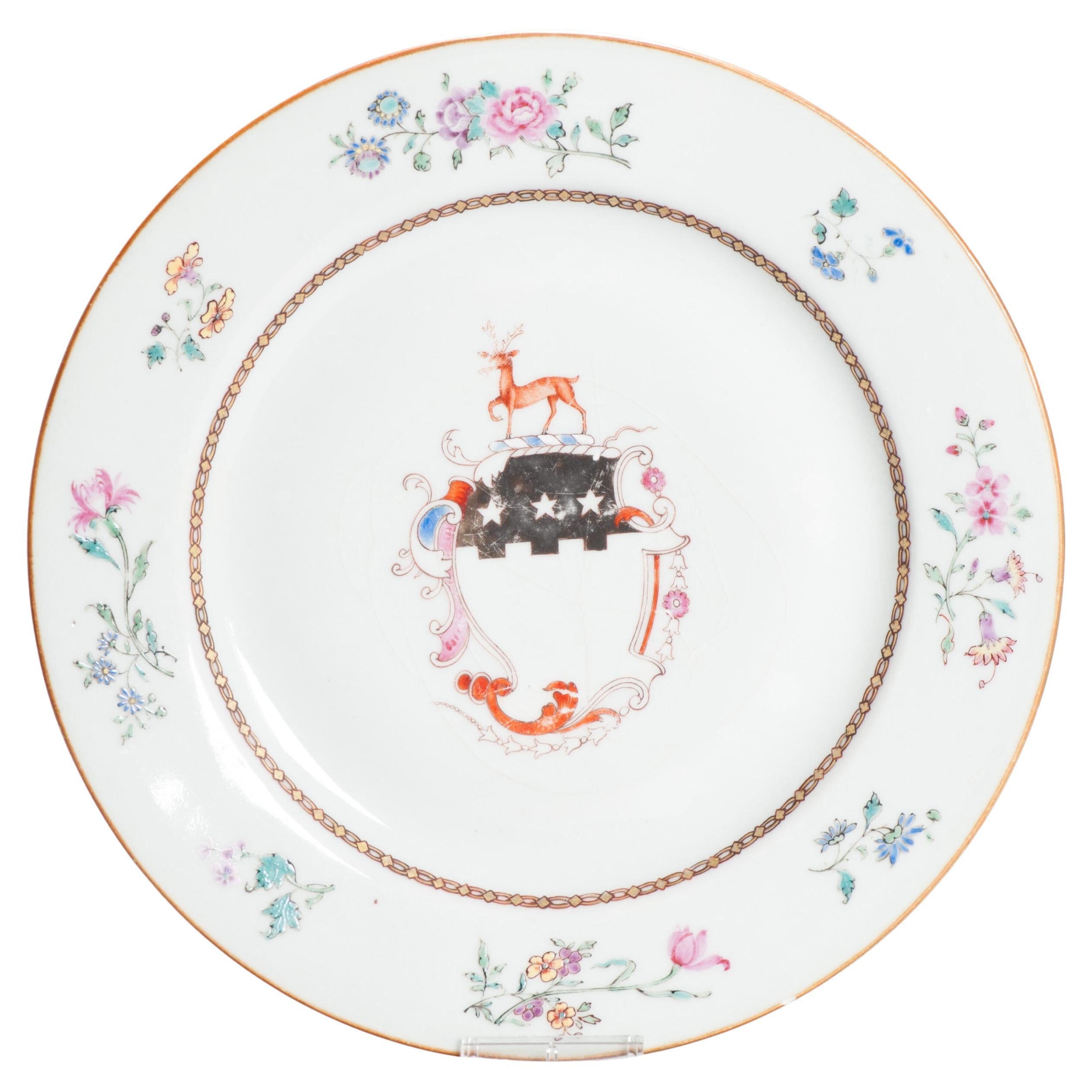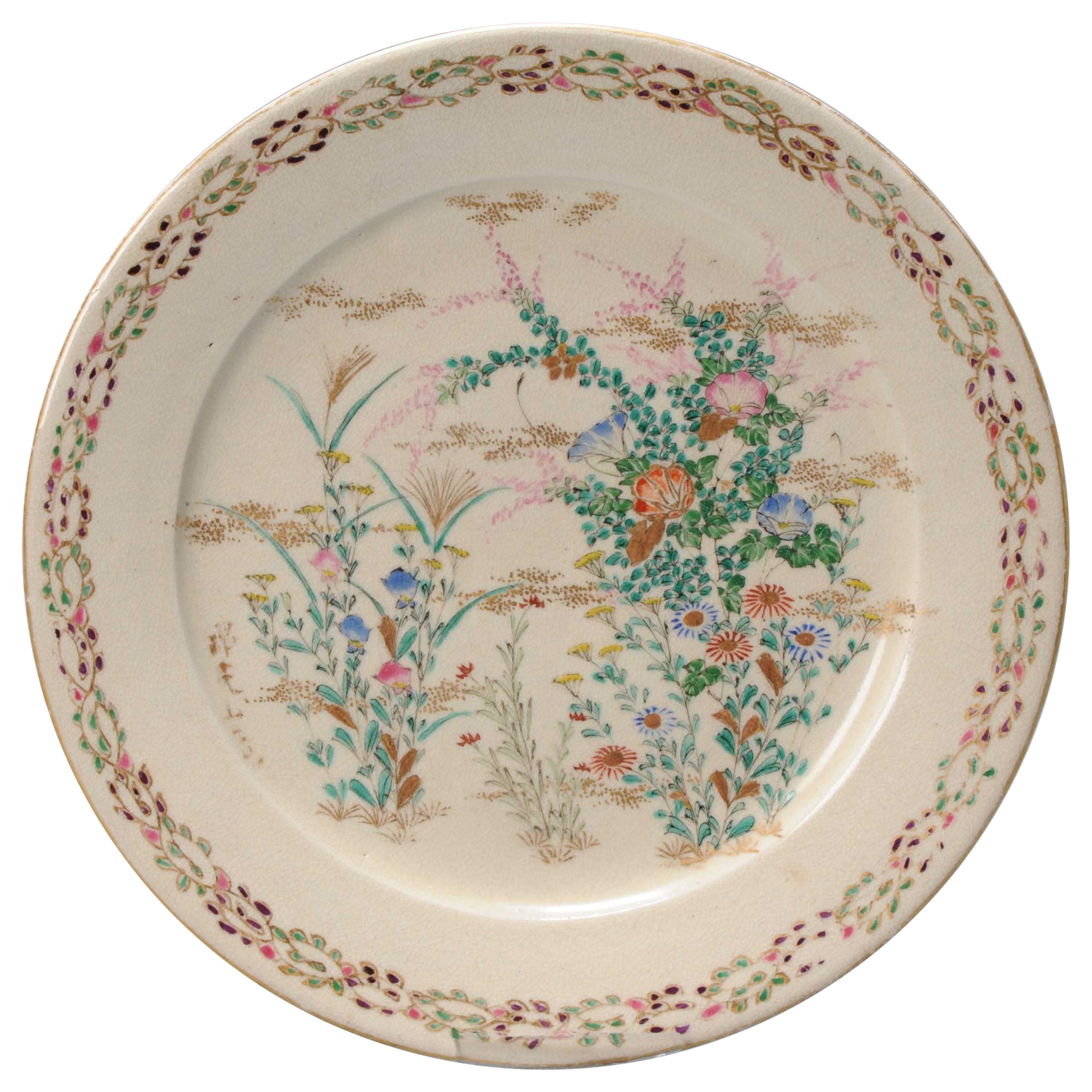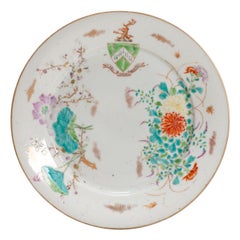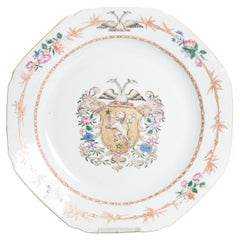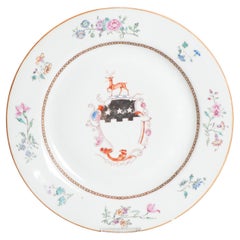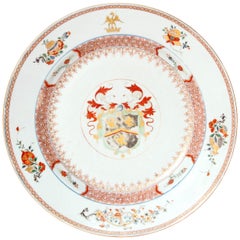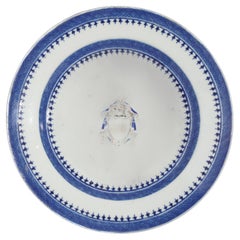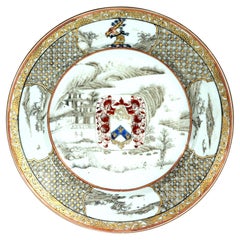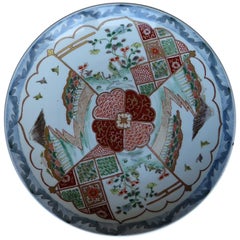Items Similar to Antique Arita Japanese 19C Meiji Armorial plate with fine details ARMS OF POWEL
Want more images or videos?
Request additional images or videos from the seller
1 of 10
Antique Arita Japanese 19C Meiji Armorial plate with fine details ARMS OF POWEL
$958.12
$1,197.6520% Off
£714.15
£892.6920% Off
€808
€1,01020% Off
CA$1,314.82
CA$1,643.5220% Off
A$1,472.24
A$1,840.3120% Off
CHF 768.14
CHF 960.1820% Off
MX$17,938.21
MX$22,422.7720% Off
NOK 9,747.19
NOK 12,183.9920% Off
SEK 9,266.98
SEK 11,583.7320% Off
DKK 6,151.81
DKK 7,689.7720% Off
Shipping
Retrieving quote...The 1stDibs Promise:
Authenticity Guarantee,
Money-Back Guarantee,
24-Hour Cancellation
About the Item
Sharing with you this magnificent lovely plate from the late 19th century, with high quality painting.
It's an armorial dish with the arms of Powell.
The text says; Pro patria semper
The mark reads by Fukagawa (深川造) with an orchid mark above indicating this was actually produced by Koransha in the 1880s to early 1890s, and pre-dates the founding of Fukagawa Seiji.
Similar dish sold by Bonhams in 2023:
https://www.bonhams. com/auction/28248/lot/314/a-group-of-japanese-armorial-wares-18th-and-19th-century-4/
Condition
Perfect. Size 24.3x2.1CM DiameterxHeight
Period
19th century Edo Period (1603–1867)
Meiji Periode (1867-1912)
- Dimensions:Height: 0.83 in (2.1 cm)Diameter: 9.57 in (24.3 cm)
- Style:Meiji (Of the Period)
- Materials and Techniques:
- Place of Origin:
- Period:
- Date of Manufacture:1660-1680
- Condition:Minor losses.
- Seller Location:Amsterdam, NL
- Reference Number:Seller: 1320000896561stDibs: LU4863242454142
About the Seller
5.0
Platinum Seller
Premium sellers with a 4.7+ rating and 24-hour response times
Established in 2015
1stDibs seller since 2019
263 sales on 1stDibs
Typical response time: 2 hours
- ShippingRetrieving quote...Shipping from: Amsterdam, Netherlands
- Return Policy
Authenticity Guarantee
In the unlikely event there’s an issue with an item’s authenticity, contact us within 1 year for a full refund. DetailsMoney-Back Guarantee
If your item is not as described, is damaged in transit, or does not arrive, contact us within 7 days for a full refund. Details24-Hour Cancellation
You have a 24-hour grace period in which to reconsider your purchase, with no questions asked.Vetted Professional Sellers
Our world-class sellers must adhere to strict standards for service and quality, maintaining the integrity of our listings.Price-Match Guarantee
If you find that a seller listed the same item for a lower price elsewhere, we’ll match it.Trusted Global Delivery
Our best-in-class carrier network provides specialized shipping options worldwide, including custom delivery.More From This Seller
View AllAntique Arita Japanese Armorial Plate with Fine Details Arms of Powel, 19th C.
Located in Amsterdam, Noord Holland
Sharing this magnificent lovely plate from the late 19th century, with high quality painting.
It’s a Fukagawa mark armorial dish with the arms of Powell.
The text says; Pro patria se...
Category
Antique 19th Century Japanese Meiji Decorative Dishes and Vide-Poche
Materials
Porcelain
$1,169 Sale Price
20% Off
Antique Japanese Meiji Armorial Plate with Fine Details Arms of PowelL, 19th C.
Located in Amsterdam, Noord Holland
Sharing this magnificent lovely plate from the late 19th century, with high quality painting.
It’s a Fukagawa mark armorial dish with the arms of Powell.
The text says; Pro patria se...
Category
Antique 19th Century Japanese Meiji Decorative Dishes and Vide-Poche
Materials
Porcelain
$1,169 Sale Price
20% Off
Antique 18th Qianlong Armorial Dish Chinese Porcelain Plate China
Located in Amsterdam, Noord Holland
Very nice ca 1740 Qianlong period plate. Research Needed.
Condition
restored section to rim, 1 hairline and some minimal frits. Size 22.3x2.5CM DiameterxHeight
Period
18th century
Category
Antique 18th Century Chinese Qing Planters, Cachepots and Jardinières
Materials
Porcelain
$1,079 Sale Price
20% Off
Antique 18th Qianlong Armorial Dish Chinese Porcelain Plate China
Located in Amsterdam, Noord Holland
Very nice ca 1740 Qianlong period plate. Research Needed.
Condition
some minimal rimfrits and hairline selection in base. Size: 23.2x2.5CM DiameterxHeight
Period
18th century
Category
Antique 18th Century Chinese Qing Planters, Cachepots and Jardinières
Materials
Porcelain
$1,079 Sale Price
20% Off
Antique Meiji Period Japanese Satsuma Plate with Flowers Decoration
Located in Amsterdam, Noord Holland
Fabulous Japanese earthenware Satsuma plate with nice decoration of a flowers. Meiji period, 19th c
Lovely piece.
Additional information:
Material: Porcelain & Pottery
Type: Plates...
Category
Antique 19th Century Japanese Decorative Dishes and Vide-Poche
Materials
Porcelain
$445 Sale Price
20% Off
Antique Kangxi/Yongzheng Chinese Porcelain Armorial Dish Gellicum, 18th C
Located in Amsterdam, Noord Holland
Sharing with you this fantastic Chinese porcelain dish with the Van Gellicum coat of Arms.
Additional information:
Material: Porcelain & Pottery
Type: Plates
Region of Origin: China...
Category
Antique 18th Century Chinese Decorative Dishes and Vide-Poche
Materials
Porcelain
$989 Sale Price
20% Off
You May Also Like
Large 18th Century Chinese Export Armorial Charger
Located in Dallas, TX
An impressive 18th century Chinese export armorial charger. Crest in center of plate with floral sprays around the border. Decorative bands around of plate and the rim. White backgro...
Category
Antique Mid-18th Century Chinese Chinese Export Dinner Plates
Materials
Porcelain
Chinese export armorial Nanking plate, c. 1790
Located in Kenilworth, IL
Chinese export armorial Nanking plate with characteristic arrow border in cobalt underglaze blue.
China, circa 1790.
Category
Antique Late 18th Century Chinese Decorative Dishes and Vide-Poche
Materials
Porcelain
Yongzheng Chinese Export Porcelain Plate with Arms of Elwick of Middlesex
Located in Downingtown, PA
Rare Early 18th Century Yongzheng Period Chinese Export Porcelain Plate,
Arms of Elwick of Middlesex,
John Elwick of Mile End in Middlesex and of Cornhill in the City of London,
Circa 1730
This rare important Chinese Export armorial plate is painted with the coat of arms of Elwick of Middlesex in the center within a panel reserved against an en grisaille Chinese...
Category
Antique 1720s Chinese Chinese Export Dinner Plates
Materials
Porcelain
Japanese Porcelain Charger Plate Finely Hand Painted, Edo Period Circa 1840
Located in Lincoln, Lincolnshire
This is an excellent example of a Japanese porcelain Charger or very large plate with a finely hand painted design, dating to the Edo period circa 1840 or possibly earlier.
This cha...
Category
Antique Mid-19th Century Japanese Edo Ceramics
Materials
Porcelain
$585 Sale Price
38% Off
Yongzheng Chinese Export Porcelain Armorial Plate with Arms of Gresley
Located in Downingtown, PA
Chinese Export Armorial Porcelain Plate,
Arms of Gresley Quarterly with Bowyer in Pretence,
Yongzheng Period,
1735
This u...
Category
Antique 1730s Chinese Export Dinner Plates
Materials
Porcelain
Coat of Arms Plate in Chinese Porcelain, Qing Dysnaty
Located in Lisboa, Lisboa
Chinese export porcelain armorial plate, Qing Dynasty, Qianlong period (1736-1795), possibly made to a custom order. Polychrome decoration with coat of arms, surrounded by delicate f...
Category
Antique Mid-18th Century Chinese Baroque Porcelain
Materials
Porcelain
More Ways To Browse
18th Century Japanese Plate
18th Century Japanese Vase
Orchid Plates
17th Century Arita
Arita Plate
Japanese Arita Plate
Armorial Porcelain
Armorial Plate
17th Century Japanese Paintings
17th Century Japanese Vase
18th Century Japanese Porcelain Vases
Powell Antique
Japanese Fukagawa
Porcelain Orchids
Powell Antique Furniture
Japanese Fukagawa Porcelain
Japanese Early 19th Century Planters
Meiji Fukagawa

